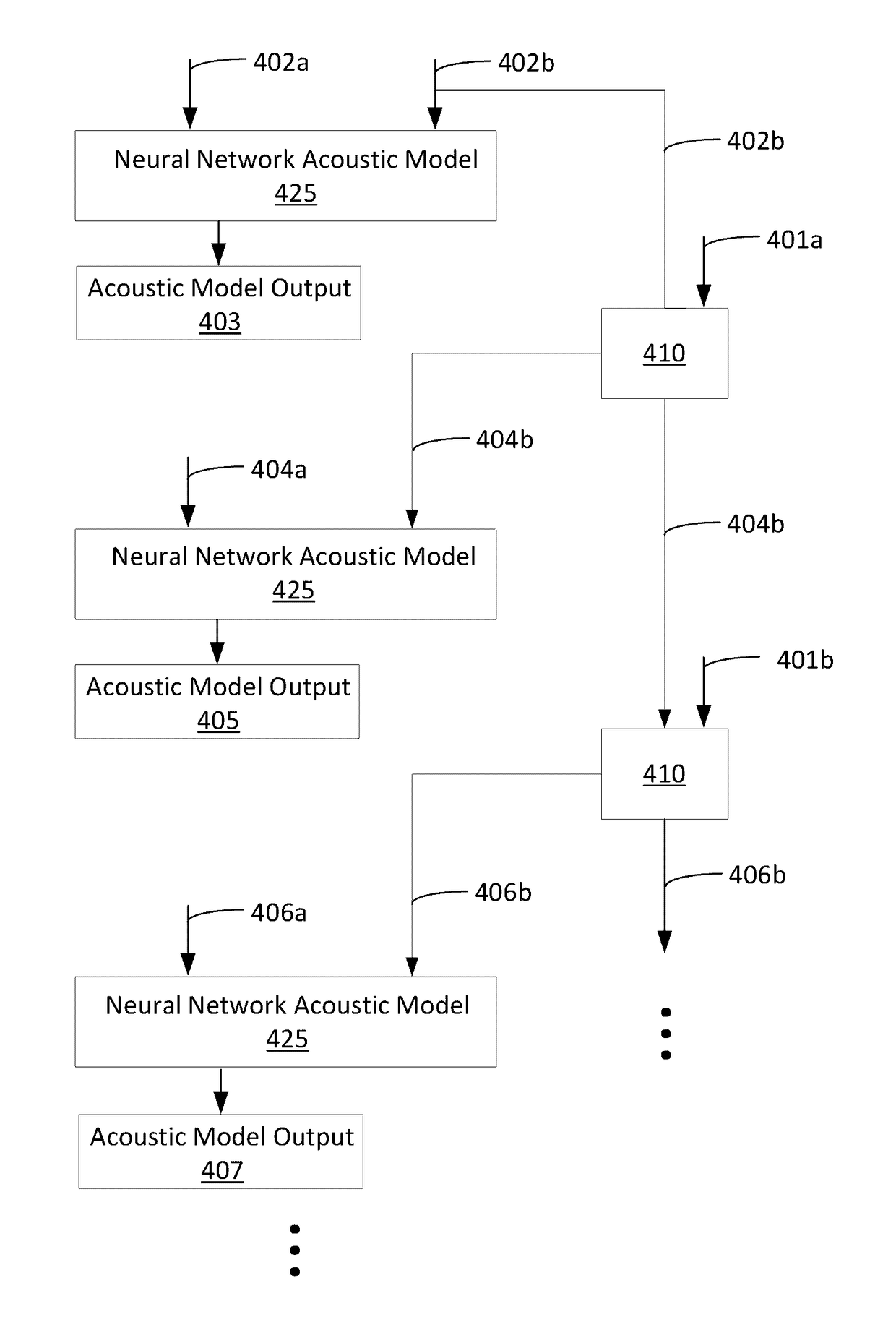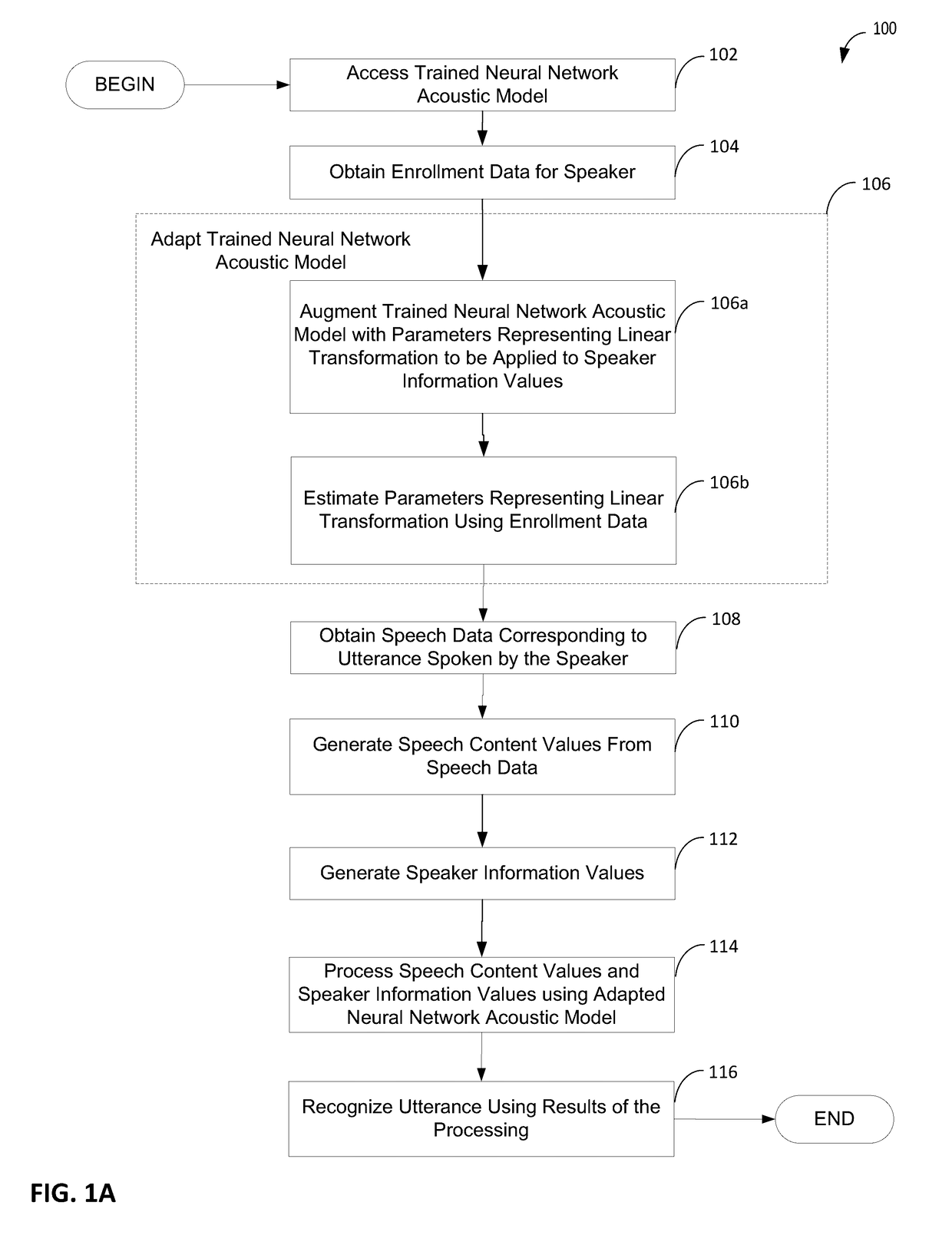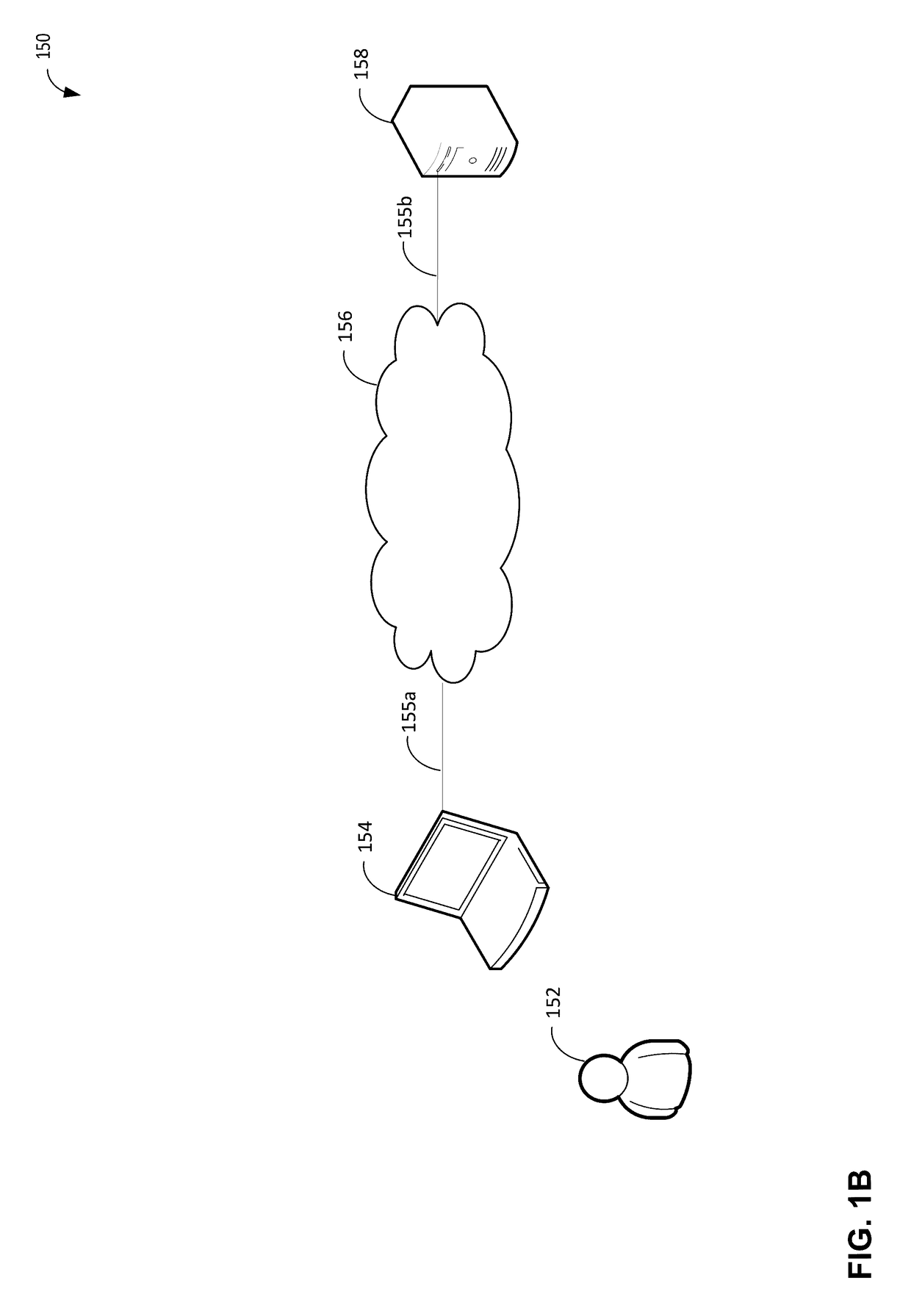System and methods for adapting neural network acoustic models
a neural network and acoustic model technology, applied in the field of system and methods for adapting neural network acoustic models, can solve the problem of not being tailored to recognizing the acoustic characteristics of speech of any one speaker
- Summary
- Abstract
- Description
- Claims
- Application Information
AI Technical Summary
Benefits of technology
Problems solved by technology
Method used
Image
Examples
Embodiment Construction
[0020]The inventors have recognized and appreciated that conventional techniques for adapting a neural network acoustic model to a speaker require using a large amount of speech data obtained from the speaker. For example, some conventional techniques require using at least ten minutes of speech data from a speaker to adapt a neural network acoustic model to the speaker. On the other hand, in many practical settings, either only a small amount of speech data is available for a speaker (e.g., less than a minute of the speaker's speech) or no speech data for the speaker is available at all. Absence of enrollment data or the availability of only a small amount of enrollment data renders conventional techniques for adapting neural network acoustic models either inapplicable (e.g., when no training data is available) or unusable (e.g., when an insufficient amount of training data is available to perform the adaptation).
[0021]Accordingly, some embodiments provide for offline adaptation te...
PUM
 Login to View More
Login to View More Abstract
Description
Claims
Application Information
 Login to View More
Login to View More - R&D
- Intellectual Property
- Life Sciences
- Materials
- Tech Scout
- Unparalleled Data Quality
- Higher Quality Content
- 60% Fewer Hallucinations
Browse by: Latest US Patents, China's latest patents, Technical Efficacy Thesaurus, Application Domain, Technology Topic, Popular Technical Reports.
© 2025 PatSnap. All rights reserved.Legal|Privacy policy|Modern Slavery Act Transparency Statement|Sitemap|About US| Contact US: help@patsnap.com



